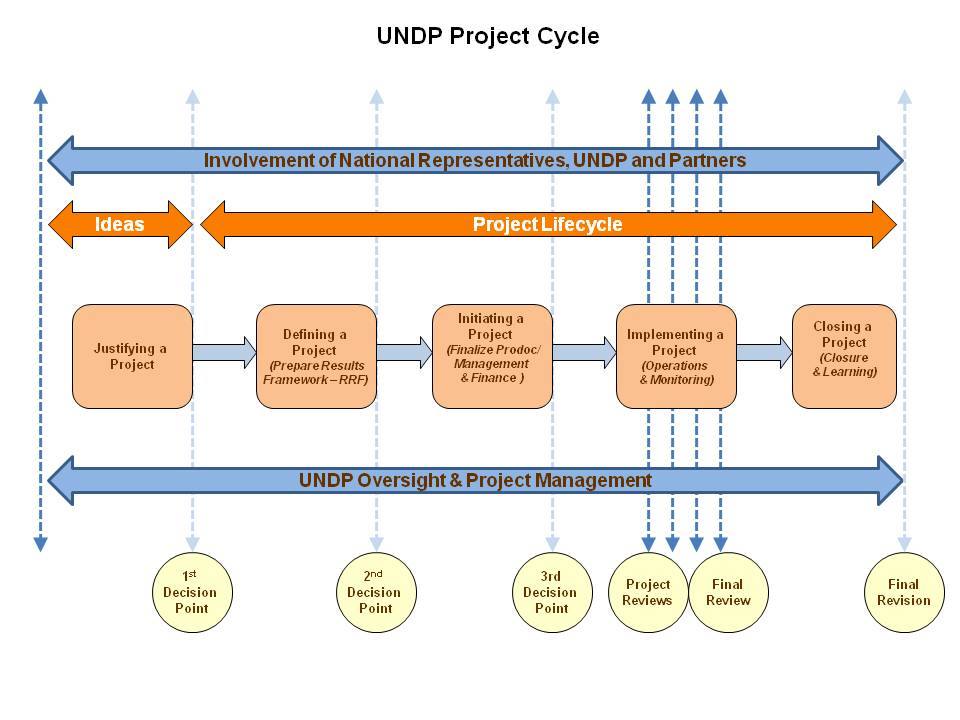خطوات تنفيذ المشروع ممثله في شكل بياني :
Figure: The UNDP Project Cycle
This approach covers the entire project life cycle from idea generation to formulating a project, implementing the activities in the project, monitoring and evaluating the project, and realizing project outputs and their intended contribution to programme outcomes. At each process, the Project Management section of the UNDP Programme and Operations Policies and Procedures (POPP) will provide information to ensure appropriate UNDP policies are followed, key stakeholders are kept informed, appropriate project management structure exists, outputs and activity deliverables are monitored, and the project is well managed.
The diagram also illustrates (with dotted lines) the key management review points within the cycle. The dotted lines at the far left and far right indicate the start and stop points of the project management cycle, and the other dotted lines indicate management approval or decision points between or within processes. The dotted lines intersecting the “Implementing a Project” process indicate that there will be reviews at each major decision point during the implementation of the project, as many or as few as required to ensure that the project is under control (these reviews are typically aligned with calendar years).
The bottom ovals in the diagram indicate different review mechanisms applicable to UNDP projects to make approval decisions. For example, the first three “Decision Point” ovals are points to consider the questions:
1st (Primary) Decision Point: Is this project the best response to the country needs as identified in the country programme? Will it contribute substantially to the results expected from the UNDP programme? This decision is made by UNDP country office management, to confirm the project idea as initially identified during development of the country programme;
2nd (Secondary) Decision Point: Is the project scope realistic – both with regards to the outputs and the specified time frame? How can the expected outputs be achieved most effectively? Do these intended outputs contribute to related national outcomes?
This decision is considered during appraisal of the project by the local Project Appraisal Committee (PAC) to review the project scope and approach;
3rd (Tertiary) Decision Point: Does the design of the project demonstrate an achievable plan to implement and assess progress towards delivering results to ensure success? Is monitoring clearly defined? This decision is considered by the Project Board when reviewing a detailed project budget and activity schedule.
Project Reviews” indicates multiple scheduled decision points that must be made while a project is being implemented typically at monitoring and evaluation events, to answer the questions: Is the project still relevant? Is the project yielding the desired results? Are those results still relevant and effectively contributing to the intended higher-level outcome? Is the project being run as planned? Is there a need to redesign, cancel or modify the project in any way in order to ensure meaningful contribution to development results؟

